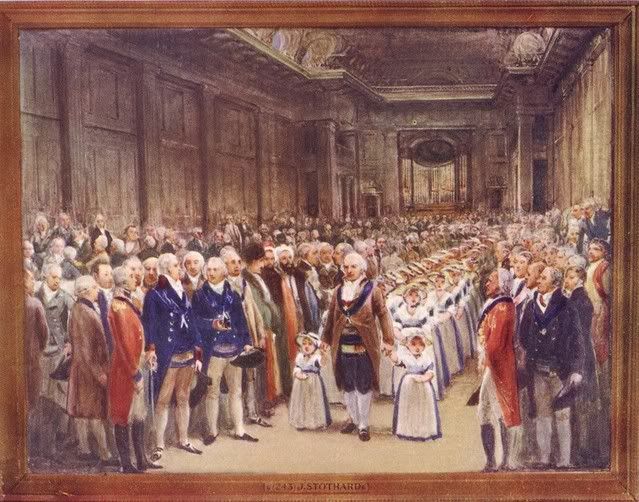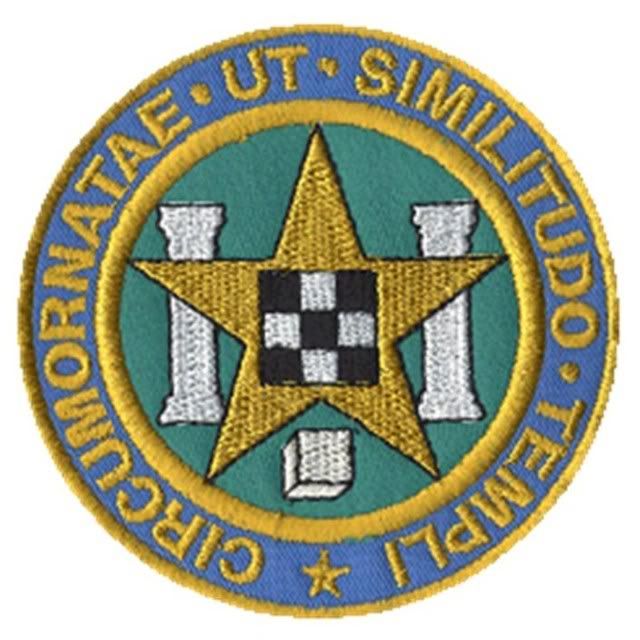Post by Tamrin on Aug 11, 2008 17:09:00 GMT 10
The Royal Masonic School for Girls is an independent school in Rickmansworth, England with both day and boarding pupils. The school was instituted in 1788, with the aim of maintaining the daughters of indigent Freemasons, unable through death, illness or incapacitation to support their families. Today the school accepts the children of both masons and non-masons.
It began in 1789 with fifteen pupils and a Matron in Somers Place, East London. During its history, the school has moved premises 3 times, twice within London and finally in 1934 to Rickmansworth in Hertfordshire, where it still is today.
MOTTO: Circumornatae ut similitudo templi — To be as the polished cornerstones of the temple.
In the beginning
In 1788 Bartholomew Ruspini and nine fellow Freemasons met to discuss plans for establishing a charitable institution for the daughters of Masons who had fallen on hard times or whose death had meant hardship for their families.
On the 14th of May 1788, a committee met at the Freemasons' Tavern in Great Queen Street to thrash out the details of the proposed institution. An advertisement for the position of Matron was put in the papers and the committee set about finding a suitable premises from which their charity could operate. The house at Sommers Place East was a suggestion from Dr de Valangin, and was taken in October at rent of £35 pa to house 15 children. The property has since disappeared but was between the present day Euston and St Pancras stations, approximately where the British library is today.
It began in 1789 with fifteen pupils and a Matron in Somers Place, East London. During its history, the school has moved premises 3 times, twice within London and finally in 1934 to Rickmansworth in Hertfordshire, where it still is today.
MOTTO: Circumornatae ut similitudo templi — To be as the polished cornerstones of the temple.
In the beginning
In 1788 Bartholomew Ruspini and nine fellow Freemasons met to discuss plans for establishing a charitable institution for the daughters of Masons who had fallen on hard times or whose death had meant hardship for their families.
On the 14th of May 1788, a committee met at the Freemasons' Tavern in Great Queen Street to thrash out the details of the proposed institution. An advertisement for the position of Matron was put in the papers and the committee set about finding a suitable premises from which their charity could operate. The house at Sommers Place East was a suggestion from Dr de Valangin, and was taken in October at rent of £35 pa to house 15 children. The property has since disappeared but was between the present day Euston and St Pancras stations, approximately where the British library is today.

School Crest
The School Badge
At each side of the design are two pillars. These represent the entrance to the “Temple not made with hands” of which we are ourselves the stones. The black and white tessellated pavement represents joy and sorrow, adversity and prosperity interwoven. In the centre is a five pointed star it is not known why it is there particularly but it has been thought to typify the 5 senses which are needed for learning. At the bottom of the new badge, and centre of the old badge is the “smooth Ashlar”. When a stone is prepared for builders it is first chiselled into a rough cube, known as a rough Ashlar. It is then the task of the more skilled craftsmen to form it into a “smooth Ashlar” that is fit to take its place in the walls of the temple. Finally the badge is bounded by a circle representing eternity.
At the top of the old badge are the letters R.M.I.G standing for Royal Masonic Institution for girls. On the new badge is the school motto, Circumornate ut simultudo temple, which is the Vulgate version (The Latin version translated by St. Jerome about 385 AD from the original Hebrew) of a phrase from Psalm 144 v.12 “That our daughters may be as the polished corners of the temple”
School Drill
The school drill is akin to something expected on an army parade ground. Some of it originates in Swedish Drill, and some is based on calisthenics. When exercising began to be incorporated into girls' education there were no trained women P.E. teachers, so drilling was under the guidance of an Army drill instructor. The marching, counter marching and arm stretches were considered the only exercise suitable for a young lady.
Described originally as callisthenics, exercises and marching no one is entirely sure when school drill began. In an extract from the school magazine Machio in 1962, school drill is purported to be a hundred years old. There is a reference to it is an account of prize day 1876 although it is not referred to as drill.
It was performed to music on a piano, later 2 grand pianos and consisted of 180 girls ( the number of degrees in a semicircle). In 1980 the music was recorded and the spoken commands gave way to a whistle. The girls learn their positions (based on their height, and thus changing from year to year and needing to be re-learned) and move in time to the music from one point to the next. The end of the performance is marked by the girls producing the Masonic emblem of set square and compass, and the point, the smallest child in the performance marching forward alone to complete the symbol.
At each side of the design are two pillars. These represent the entrance to the “Temple not made with hands” of which we are ourselves the stones. The black and white tessellated pavement represents joy and sorrow, adversity and prosperity interwoven. In the centre is a five pointed star it is not known why it is there particularly but it has been thought to typify the 5 senses which are needed for learning. At the bottom of the new badge, and centre of the old badge is the “smooth Ashlar”. When a stone is prepared for builders it is first chiselled into a rough cube, known as a rough Ashlar. It is then the task of the more skilled craftsmen to form it into a “smooth Ashlar” that is fit to take its place in the walls of the temple. Finally the badge is bounded by a circle representing eternity.
At the top of the old badge are the letters R.M.I.G standing for Royal Masonic Institution for girls. On the new badge is the school motto, Circumornate ut simultudo temple, which is the Vulgate version (The Latin version translated by St. Jerome about 385 AD from the original Hebrew) of a phrase from Psalm 144 v.12 “That our daughters may be as the polished corners of the temple”
School Drill
The school drill is akin to something expected on an army parade ground. Some of it originates in Swedish Drill, and some is based on calisthenics. When exercising began to be incorporated into girls' education there were no trained women P.E. teachers, so drilling was under the guidance of an Army drill instructor. The marching, counter marching and arm stretches were considered the only exercise suitable for a young lady.
Described originally as callisthenics, exercises and marching no one is entirely sure when school drill began. In an extract from the school magazine Machio in 1962, school drill is purported to be a hundred years old. There is a reference to it is an account of prize day 1876 although it is not referred to as drill.
It was performed to music on a piano, later 2 grand pianos and consisted of 180 girls ( the number of degrees in a semicircle). In 1980 the music was recorded and the spoken commands gave way to a whistle. The girls learn their positions (based on their height, and thus changing from year to year and needing to be re-learned) and move in time to the music from one point to the next. The end of the performance is marked by the girls producing the Masonic emblem of set square and compass, and the point, the smallest child in the performance marching forward alone to complete the symbol.


